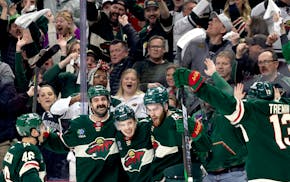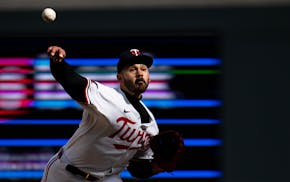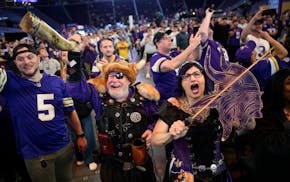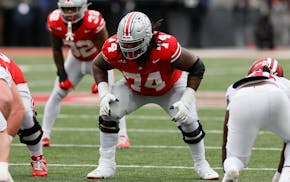On Sunday in San Francisco, Anthony Edwards will take part in his third consecutive All-Star Game. When the NBA announced he had made the Western Conference pool of players as a reserve, he was asked after a win in Utah whether it was still special.
"It's routine at this point," Edwards said with a smile. "Put the work in, you start to expect certain things, but it's always a great accomplishment, a great feeling. A great announcement. There were some people out here that thought I shouldn't have made it, but I appreciate y'all."
Among those who didn't believe the Timberwolves guard should have gotten in this season was TNT analyst Charles Barkley, who had left Edwards off his list of All-Stars and said during one of the network's broadcasts this season that Edwards had regressed and that he was taking too many jump shots.
About that shot — it's funny how tables can turn in the arc of a player's career, and how yesterday's critique can morph into something else. It's fair to give Edwards some flak on plenty of matters. His off-ball defense could be better, and his end-of-game execution and shot selection can be good one night and bad another.
But if there is one criticism of his game that Edwards has worked to overcome, it is his shot.
"I've been trying to perfect it," Edwards said earlier this season. "Because when I came in the league, the main thing was, 'He could get downhill, but he can't shoot.' … So I've been trying to knock that off my name for a long time. It's kind of on it a little bit, but I feel like I'm trending in the right direction."
This dates to when Edwards was a teenager working out with his skills coach turned business manager, Justin Holland. Edwards used to tell Holland when he was 15 and 16 years old that if Holland taught Edwards how to shoot, "I'd be unguardable."
When Edwards shot under 30% from three-point range in college at Georgia, the frequent knock on him in the draft process was that he might never develop a consistent shot. But the Wolves noticed in his first two seasons that Edwards was proficient at catch-and-shoot three-pointers. His off-the-dribble shooting needed work, but the promise was there in those catch-and-shoot numbers. His second season, Edwards shot 41% on catch-and-shoot threes. Concerns that he would never become more than a high-volume chucker eased.
Over his career, Edwards has worked with his player development coach, Chris Hines, on tweaking his form and making it more fundamentally sound and consistent. They've altered his movement from his waist to above his head to make it a cleaner process, and Hines constantly yells reminders from the bench at Edwards during games if he notices something is off with the release, Edwards' balance or his follow-through.
Edwards' overall three-point percentage has jumped from 35% a season ago to better than 41% this season. Despite what traditionalists say, when players shoot that kind of percentage from three-point range, they should be firing 10 threes per game, as Edwards is. His three-point shot has gone from being respected to being feared.
As the season has progressed, Edwards has found a better mix of driving and shooting from outside. Yes, early in the season he was shooting more and driving less, but after a tough December in which he averaged just 20.5 points per game, Edwards changed up his game. He is getting to the rim more, no doubt enabled by opponents having to fear that three-pointer. After averaging 2.4 free-throw attempts per game in December, that number skyrocketed to 8.1 in January and is at 11 so far in February.
In each of the past few seasons, Edwards has made leaps in his game midseason. Two seasons ago, he changed when Karl-Anthony Towns went out because of a calf injury and he had to be the focal point of the offense for the first time in his career. Last season, when Towns missed time over the last quarter of the season, Edwards put the Wolves on his back and had some remarkable performances to lead the team into the playoffs, and that ascent culminated in two series wins.
The next evolution of his game is on display now. As the Wolves have accumulated injuries again, Edwards has taken his game up a notch. He is blending his outside shooting with driving to the rim better than he ever has, and he's showing that at age 23 there's still plenty of room for him to become an even more efficient, more lethal scorer.

La Velle: Wild center Marco Rossi is easy to root for

Kaprizov scores twice, Boldy stays hot as Wild skate past Vegas in Game 3

Twins-Angels series preview: Pablo López activated, will start tonight

Five extra points: Vikings, McCarthy win on Day 1 of draft, but the biggest winner was ...

